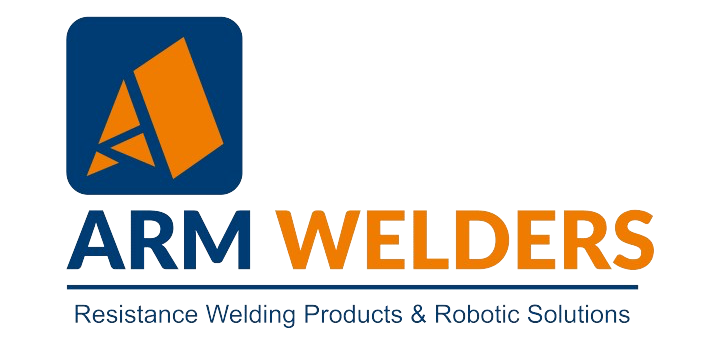Resistance welding is a crucial technique in car manufacturing, known for its efficiency, reliability, and cost-effectiveness. As demand grows for lighter, stronger vehicles, understanding resistance welding becomes essential for industry professionals and enthusiasts. This blog explores resistance welding in the automotive sector, from its technical aspects to its applications, benefits, and future trends.
What is Resistance Welding?
Resistance welding joins materials by applying pressure and passing an electric current through them. It includes several types:
- Spot Welding: In spot welding, metal sheets are joined together at specific points by applying pressure and passing an electric current through them. This method is commonly used in automotive assembly due to its ability to quickly and effectively join thin sheets of metal.
- Seam Welding: Seam welding involves creating continuous welds along the length of a seam. It is ideal for applications where airtight or water-tight seals are required, such as in the production of fuel tanks and exhaust systems in vehicles.
- Projection Welding: In projection welding, raised sections or projections on one or both pieces of metal are used to concentrate the welding current. This method is efficient for welding studs, nuts, or other fasteners to metal parts, ensuring strong and reliable joints.
- Flash Welding: Flash welding utilises resistance and electric arcs to rapidly heat the materials before pressing them together. This process is commonly used in the automotive industry to weld components like shafts, gears, and other assemblies where high strength and precision are required. The process heats workpieces internally via electrical resistance at the joint interface.
Technical Aspects
Resistance welding depends on 3 factors:
- Current: A strong electric current, ranging from 1000 to 100,000 amperes, is important as it creates the heat necessary to melt materials and form strong welds. The current’s intensity directly impacts welding efficiency and quality.
- Pressure: Electrodes apply pressure on the workpieces during welding to ensure materials make close contact. This pressure is important for removing contaminants and evenly distributing heat across the joint. This process thus creates solid bonds between the materials.
- Time: Precisely controlling how long the current is applied is crucial. This control ensures materials melt and fuse properly without overheating or cooling too quickly, resulting in durable and reliable welds.
Applications in the Automotive Industry
In cars, resistance welding joins materials like high-strength steels, aluminium and coated steels. The key uses are:
- Body-in-White (BIW) Assembly: Resistance welding joins thousands of sheet metal parts together to create the structural framework of vehicles.
- Battery Pack Assembly: In electric vehicles (EVs), resistance welding securely joins cells and modules to form reliable connections within battery packs.
- Exhaust Systems: Resistance seam welding ensures that pipes in exhaust systems are welded together tightly and securely, preventing leaks.
- Seating and Interiors: Projection welding is used to attach nuts, bolts, and other fasteners to seating frames and interior components, ensuring they are securely fastened.
Advantages
Resistance welding has several advantages, making it a preferred method in the automotive industry:
- High Efficiency: The welding process is very fast, with welds done in milliseconds.
- Automation-Friendly: It’s easy to include in automated production lines, which helps to make production faster and more consistent.
- Strong Joints: It creates strong and reliable welds that are very important for keeping vehicles safe and functioning well.
- Cost-Effective: It doesn’t need a lot of extra material and uses less energy, which helps in saving money.
- Versatility: It can weld many different types of materials and thicknesses effectively, making it very useful in manufacturing.
Challenges and Future Trends
Despite the many benefits, certain challenges include:
- Material Sensitivity: Some materials, such as strong steels and aluminium alloys, require a precise adjustment of welding settings to ensure they join correctly.
- Electrode Wear: As electrodes wear down over time, it impacts the quality of welds and requires frequent maintenance .
- Heat Management: Too much heat can bend thin materials or harm coatings, so it’s crucial to manage temperature carefully.
Thus, the future trends focus on:
- Advanced Control Systems: Manufacturers are implementing real-time monitoring and adaptive control systems to maintain the best welding conditions.
- Improved Electrode Materials: Researchers are developing more durable electrode materials to reduce wear and maintenance costs.
- Hybrid Welding Techniques: Engineers are combining resistance welding with other methods such as laser welding to better the quality and versatility of welds.
- Sustainability Initiatives: Innovators are introducing technologies which are focusing on reducing energy consumption and material waste,
Conclusion
Resistance welding is essential for putting cars together efficiently. As technology and materials get better, resistance welding changes to meet the needs of producing cars. It is important to stay updated about the latest advancements to fully utilise the potential in the production process.
About Arm Welders Pvt. Ltd.
Arm Welders Pvt. Ltd. is an India-based global resistance and spot welding manufacturing company. With a keen eye for technical innovation, the company is also a frontrunner for Robotic Automation in a plethora of sectors. Arm Welders product range has been approved for use by large automotive OEMs in both domestic and international markets. With a historic legacy of 45+ years and a futuristic vision, Arm Welders continues to grow its global footprint with exceptional technology and quality manufacturing.
